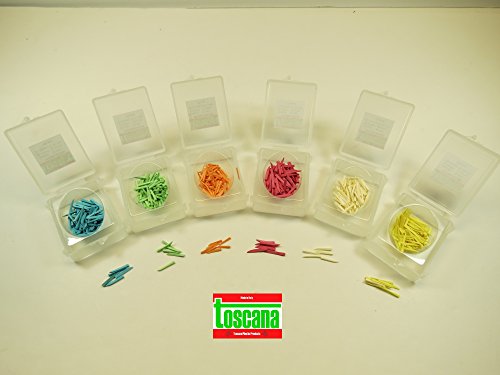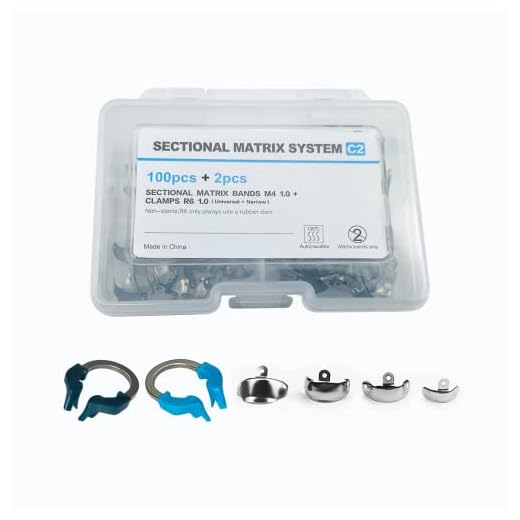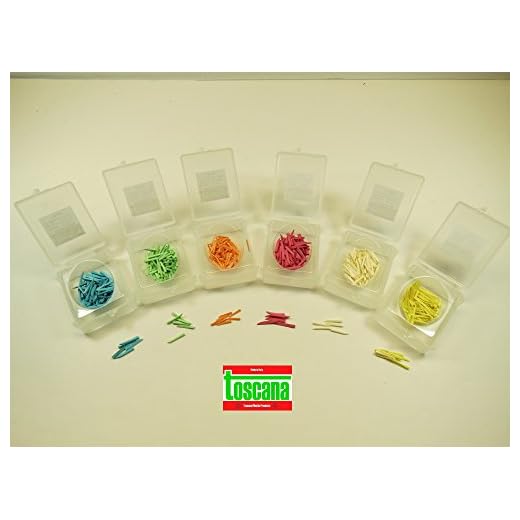




When it comes to dental procedures, precision and attention to detail are essential. One important step in many dental treatments is the placement of a dental wedge. Dental wedges are commonly used to provide separation between teeth, creating the necessary space for various procedures.
What is a dental wedge?
A dental wedge is a small triangular device made of wood or plastic. It is used to gently separate adjacent teeth, ensuring that the dental dam or matrix band is properly positioned. The placement of a dental wedge helps prevent any soft tissue damage and promotes optimal restoration outcomes.
Why is the placement of a dental wedge important?
Proper placement of a dental wedge is crucial for a successful dental procedure. It helps to create a tight contact point between two teeth, ensuring that the restoration materials are correctly placed and bonded. By providing the necessary separation, the dental wedge also helps to control bleeding, improve visibility, and enhance access for the dentist.
In this article, we will guide you through the step-by-step process of placing a wooden dental wedge for effective tooth separation.
Benefits of using a wooden dental wedge
Wooden dental wedges are commonly used in dental procedures for a variety of reasons. They provide several benefits for both the dentist and the patient.
1. Stability
Wooden dental wedges are known for their stability compared to other materials like plastic or metal. They do not slip or move easily once placed, providing a secure separation of the teeth during dental procedures. This stability allows for better access and visibility, ensuring precise and accurate treatment.
2. Comfort
Wooden dental wedges are made from a natural material that is gentle on the gums and surrounding tissues. They are less likely to cause discomfort or irritation to the patient during the procedure, making the overall experience more comfortable. The smooth texture of the wooden wedges also minimizes the risk of tissue damage.
3. Absorbency
Wooden dental wedges have a porous nature, which allows them to absorb excess moisture and saliva during the procedure. This helps to keep the treatment area dry, improving the overall efficiency of the dental procedure. The absorbent nature of wooden wedges also reduces the risk of the wedges slipping or becoming dislodged.
4. Biocompatibility
Wooden dental wedges are biocompatible, meaning that they are well-tolerated by the body and do not cause adverse reactions or allergies. This is particularly important for patients with sensitivities or allergies to other materials. The biocompatibility of wooden wedges ensures that they can be safely used in a wide range of dental procedures.
5. Cost-effective
Wooden dental wedges are generally more cost-effective compared to other materials. They are readily available and offer good value for money without compromising on quality or performance. Dentists can benefit from using wooden wedges as a cost-effective alternative without compromising on the necessary functionality.
| Benefits of using wooden dental wedges: |
|---|
| Stability |
| Comfort |
| Absorbency |
| Biocompatibility |
| Cost-effective |
Improved tooth isolation
To ensure the success of any dental procedure, proper tooth isolation is essential. By effectively isolating the tooth, dentists can prevent contamination, improve visibility, and enhance treatment outcomes. One common method used for tooth isolation is the placement of wooden dental wedges.
Wooden dental wedges are small triangular-shaped pieces made from high-quality birch wood. They are designed to create a separation between adjacent teeth, allowing for better access and control during dental procedures. Placing a dental wedge correctly is crucial to achieving optimal tooth isolation.
| Step | Description |
|---|---|
| 1 | Select an appropriate wedge size based on the interproximal space between the teeth. The wedge should fit snugly without causing any discomfort to the patient. |
| 2 | Moisten the wedge with water or a water-based lubricant to prevent it from splintering or breaking during insertion. |
| 3 | Hold the wedge gently with a pair of non-locking tweezers or dental forceps. Make sure to grip the wedge securely to avoid dropping it or causing injury. |
| 4 | Insert the wedge into the interproximal space, making sure it is positioned firmly against the tooth. Apply gentle pressure to ensure a snug fit. Be careful not to insert the wedge too forcefully, as this can cause damage to the tooth or surrounding tissues. |
| 5 | Once the wedge is in place, inspect the isolation to ensure there are no gaps or spaces. Adjust the position of the wedge if necessary to achieve optimal tooth isolation. |
By following these steps, dentists can improve tooth isolation and create a more controlled working environment. This allows for more precise dental procedures and ultimately better treatment outcomes for patients.
Enhanced restorative procedures
In modern dentistry, enhanced restorative procedures have become increasingly important for achieving optimal outcomes and patient satisfaction. These procedures involve the use of advanced techniques and materials to restore the form, function, and aesthetics of a patient’s natural teeth.
Advancements in Dental Materials
One of the key components of enhanced restorative procedures is the use of advanced dental materials. These materials, such as composite resins and dental ceramics, offer improved strength, durability, and aesthetics compared to traditional materials like amalgam. They also allow for better matching of the natural color and texture of the patient’s teeth, resulting in restorations that are virtually indistinguishable from natural teeth.
Additionally, advancements in dental materials have allowed for the development of adhesive techniques. By using bonding agents, dentists can more securely attach restorations to the natural tooth structure, minimizing the risk of failure or damage. This also allows for more conservative preparations, as less tooth structure needs to be removed to accommodate the restoration.
Computer-Aided Design and Manufacturing (CAD/CAM)
Another significant advancement in restorative dentistry is the use of computer-aided design and manufacturing (CAD/CAM) technology. This technology enables dentists to create highly precise and customized restorations, such as crowns and veneers, in a single appointment.
With CAD/CAM technology, a digital impression of the patient’s teeth is captured using a specialized scanner. This impression is then used to design the restoration on a computer. Once the design is complete, it is sent to a milling machine, which fabricates the restoration from a block of dental ceramic or composite resin.
The use of CAD/CAM technology eliminates the need for messy and uncomfortable traditional impressions, as well as the need for temporary restorations. It also allows for faster turnaround times, as the entire process can be completed in a single visit.
Conclusion
Enhanced restorative procedures have revolutionized the field of dentistry, offering both dentists and patients numerous benefits. From the use of advanced dental materials to the integration of CAD/CAM technology, these procedures allow for more precise, durable, and aesthetically pleasing restorations. As technology continues to advance, it is likely that even more innovative techniques and materials will be developed, further improving the outcomes of restorative procedures.
| Benefits of Enhanced Restorative Procedures |
|---|
| Improved strength and durability |
| Enhanced aesthetics |
| Conservative tooth preparations |
| Precision and customization |
| Elimination of traditional impressions and temporary restorations |
Prevention of Composite Overhangs
Composite overhangs occur when excess composite material extends beyond the tooth surface during restoration procedures. These overhangs can lead to a variety of issues, including plaque buildup, gingival irritation, and compromised dental aesthetics. Therefore, it is crucial to employ preventive measures to minimize the occurrence of composite overhangs.
One effective strategy for preventing composite overhangs is the proper placement of wooden dental wedges. These wedges create separation between adjacent teeth, allowing for improved visibility and access during the composite restoration process.
| Steps to Prevent Composite Overhangs: |
|---|
|
By following these steps and incorporating the use of wooden dental wedges, dental professionals can significantly reduce the occurrence of composite overhangs. This not only improves the overall quality of the restoration but also promotes better oral hygiene maintenance for the patient.
Reduction of patient discomfort
When placing a wooden dental wedge, it is crucial to prioritize patient comfort and minimize any potential discomfort. By following the proper technique and taking necessary precautions, dental professionals can significantly reduce patient discomfort during this procedure.
- Effective numbing: Prior to placing the dental wedge, it is essential to ensure that the patient’s teeth and surrounding gums are adequately numbed. This can be achieved by administering a local anesthetic, which will minimize any pain or discomfort during the placement process.
- Gentle handling: Dental professionals should handle the wooden dental wedge with care to prevent any unnecessary discomfort to the patient. The wedge should be inserted gently and slowly, avoiding any excessive force or pressure.
- Proper positioning: Correctly positioning the dental wedge is vital to reduce patient discomfort. The wedge should be placed evenly between the teeth, ensuring that it provides the necessary separation without causing any additional pressure or discomfort.
- Regular communication: Throughout the procedure, dental professionals should maintain regular communication with the patient, ensuring they are comfortable and free from any pain. It is important to encourage patients to communicate any discomfort immediately, allowing for adjustments to be made if necessary.
- Post-procedure care: After placing the wooden dental wedge, dental professionals should provide proper post-procedure instructions to the patient. This includes guidelines on how to manage any residual discomfort, such as avoiding hard or sticky foods and maintaining good oral hygiene.
By following these guidelines and prioritizing patient comfort, dental professionals can ensure that the placement of wooden dental wedges is a comfortable and pain-free experience for their patients.






